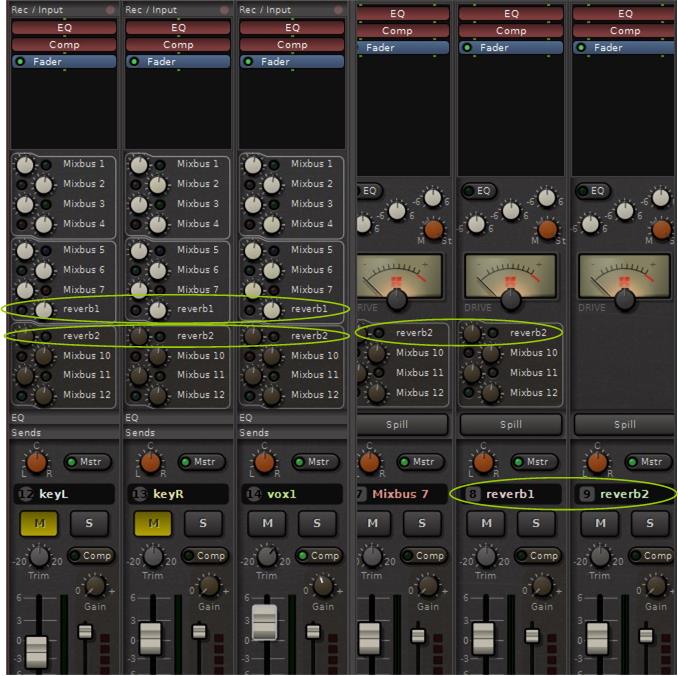

Channel Name Slates now show the track number turns red if the track is record-armed, and use a larger, higher-contrast font.Mixbus v6 includes several of our most popular user-requested features, including: mp3 files directly from the Export window.
MIXBUS 32C LATENCY BAD WINDOWS
Now Windows and Linux can also import mp3 directly.
MIXBUS 32C LATENCY BAD MAC
In the past, only Mac could import mp3’s using the apple built-in decoder. Native MP3 Import & Export on all platforms The virtual keyboard maps your QWERTY keyboard into a note-input device. For example you can *tag* all the regions that were part of a good overdub or you can tag voiceover regions with the phrase they represent.Īn on-screen keyboard is available to enter rhythms and melodies when you don’t have a physical MIDI keyboard available. Regions and Sources may be “tagged” together, which can help in session management.

Sources have a "Take ID", or timestamp, so you can locate and recover that great take from yesterday's session. The “Source list” shows the file sources used by the session, whether they are used in the current snapshot or not. The ability to select a bunch of regions and "tag" them is especially useful for book-on-tape and other post-production tasks. Selecting a region in the editor canvas will select it in the region-list, and vice-versa. The “Region List” has been redesigned to show only the regions actually in use in the current snapshot. In addition to the existing region splitting action (with the 's' key), a Cut/Scissor tool is provided, similar to those used in other DAWs. The active synchronization source can be selected on-the-fly. All potential timecode sources are now displayed on a single window, each with its current timecode location. Mixbus can now record while chasing external timecode sources that are varispeeding (playing faster or slower than 100%). (pre-configured templates coming soon)Įnhanced transport syncing with varispeed recording It is possible to remotely control foldback mixes from a tablet or phone application running TouchOSC or Lemur. You may override this on a per-track basis and choose to monitor the Input or Disk, only.Īudio tracks can now monitor both the input and disk simultaneously, when rehearsing a punch-in, for example.ĭAW-style "Aux" buses are now integrated in the Mixbus engine:Ĭreate unlimited Aux Buses, and assign to them from any track(s).Īux buses are now included in the main mixbus latency-compensation engine, allowing much more complicated routings.Īux sends will now follow the main channel pan, or un-check the "Follow channel pan" to alow a separate stereo pan for that channel's send to the aux.įoldback buses are used to create headphone mixes for your performers.Ī foldback bus can combine any mixer strips, either pre- or post-fader, into a stereo cue feed.Įvery foldback bus has its own plugins and fader, allowing you to create a complete custom sound for each artist. Plugin Delay Compensation (PDC) can now be disabled when you want the shortest path from input to output (when playing through a virtual instrument, for example).īy default, MIDI tracks will now monitor both the “Input” and “Disk” when they are in automatic mode. And these buses are now fully latency-compensated just like the regular mixbuses>master path. In addition to the Harrison Mixbus console (which has always been latency-compensated) it is now possible to add additional buses alongside the tracks, which can be used for additional grouping, fx sends, and other tasks. Mixbus v6 incorporates all of the improvements to the Mixbus32C v6 engine that were published last month. Mixbus v6 keeps the tried-and-true Mixbus knob-per-function mixer interface with a dedicated Sends and EQ section. Mixbus v6 incorporates all of the deep improvements to the Mixbus32C engine, including comprehensive latency compensation, cue monitoring, unlimited pannable auxes, and foldback buses. (we could show you an older one, but it would be black&white only!) The EQs in Mixbus are voiced and tested by some of the same people who worked on the original Harrison Series32 consoles: Pictured below is the Harrison 32C circa 1980. Harrison is the only DAW developer with a 45-year history of making studio consoles. Here you'll find an emulated mixer developed by a company who makes the real thing: The mixer page is where Mixbus differs from all other workstations.

Mixbus is a full-featured audio workstation with recording, arranging, editing, automation, mixing, and mastering features:


 0 kommentar(er)
0 kommentar(er)
